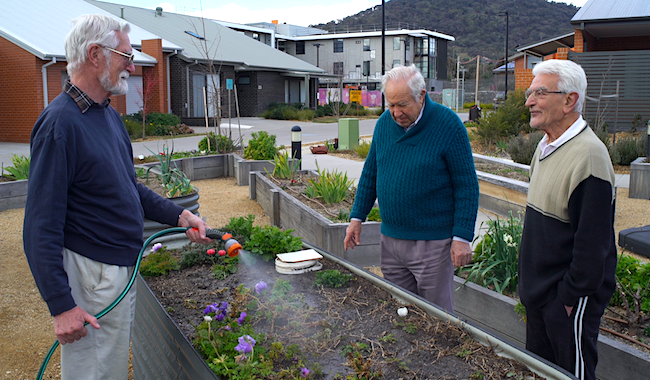
Remember the days when everyone in the street knew each other, when neighbours looked out for one another and when visits from family and friends were as regular as clockwork?
Do you or your parents reflect fondly on those times, or do they invoke a sense of sadness that life is no longer centred around a community?
Ageing brings many gifts, but we often hear from members of the Starts at 60 community who feel isolated, particularly as their partners become ill or pass away, friends downsize out of their neighbourhood, or their retirement income gets too tight for social occasions.
Those feelings are reflected in data researchers collect, that indicates as much as 20 per cent of the older Australian population is lonely.
This is more than just a sad societal issue, however. It’s one that has a significant health impact.
Studies show that social isolation, loneliness or living alone has a significant impact on the risk of premature death, on par with one of the other well-accepted risk factors such as obesity, smoking and heavy drinking.
So, it’s not surprising that increasing numbers of people are attracted to the community aspect of retirement villages, and are choosing to move to accommodation that allows them to live independently while being part of a tight-knit group of friends and neighbours.
More than 184,000 Aussies currently call a retirement village home, and the overwhelming majority say they are happier than they were before they made the move, according to the Property Council of Australia.
More than 90 per cent say their social life is the same or better, and the same percentage reckon the move was a good financial decision.
Retirement village living lets residents tap into the social interaction and companionship of a large, like-minded community when they wish, without being obligated to do so.
That’s because common facilities within villages, such as community centres, gyms, swimming pools, movie theatres, communal gardens, craft rooms, and services such as organised outings, are all designed to create a sense of belonging.
And, just like the old days, this type of community living provides the added peace of mind of residents keeping an eye on each other, and of friendships springing up over shared retirement interests.
The property council notes that independent research backs up the health benefits of community living.
Research by Grant Thornton found “that village residents live independently for five years longer than the national average, delaying their entry into the residential aged care system due to the supported environment they live within,” Ben Myers, executive director at the council, explains.
The findings were echoed in the council’s 2017 retirement census, carried out by PwC, which found that as well as being affordable to average Aussies, retirement communities were increasingly connected to health and lifestyle services in a way that’s going to be vital for the wellbeing of the country’s ageing population.
“As our population ages, and more of us work longer, our cities are going to need to work for senior Australians in ways they never have before, and our latest Retirement Census shows they are continuing to rise to the challenge, with the retirement living sector driving the change,” the report said.
Do you still have a sense of community in your neighbourhood? Or do you wish you had more good neighbours and friends living close by?